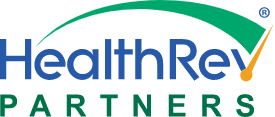
Late October, CMS released the CY2021 Home Health Final Rule. As part of the final rule, requirements were laid out for what is being called the no-pay RAP. No-pay RAPS will take effect January 1, 2021. There are several items that home health billing teams need to prepare for in order to avoid penalties.
What is a RAP?
A RAP, or Request for Anticipated Payment, is submitted at the beginning of a home health episode. Prior to PDGM, for the first 60-day episode, agencies would receive 60% at the beginning to help cover costs and then the remaining 40% when they submitted the final claim. For subsequent episodes, agencies would receive 50% at the beginning and 50% at the end.
As part of PDGM, home health payments were changed from 60-day episodes to 30-day periods of care. With that, agencies established before January 1, 2019 continued to receive RAP payments, but they were reduced. For all 30-day periods of care, the percentage split for payments changed to 20/80. Agencies that enrolled in Medicare on or after January 1, 2019 started with no-pay RAPs and one final claim for each 30-day period.
What is a No-Pay RAP and When Do We Begin Submitting?
Beginning January 1, 2021, the split percentage for RAPs will be eliminated. You’ll still be required to submit a RAP at the beginning of each 30-day period of care, but you won’t receive a RAP payment.
What are the Requirements for a No-Pay RAP?
You must submit a RAP when the physician’s written or verbal order has been received, the initial visit within the 60-day certification period has been made, and the patient has been admitted.
Should the plan of care require more than one 30-day period of care, you may submit RAPs for both the first and second periods at the same time.
What is the Penalty for Late Submission?
You’ll be subject to a penalty when you don’t submit the RAP in a timely manner. For a 60-day certification period, you must submit a RAP for the first 30-day period within five calendar days from the start of care date. In addition, for the second 30-day period, the RAP must be submitted within five calendar days of the “from date.” The penalty is equal to a 3% reduction in the wage and case-mix adjusted 30-day payment amount for each day from the start of care/admission date until the RAP submission date. Again, that’s 3% per day.
Are There Exceptions to the Late Submission Penalty?
CMS states that there are four ways to quality for a timely filing exemption:
- Fires, floods, earthquakes, or other unusual events that inflict extensive damage to the agency’s ability to operate.
- An event that produces a data filing problem due to a CMS or MAC systems issue that is beyond the agency’s control.
- A newly Medicare-certified HHA that is notified of certification after the certification date, or which is awaiting its user ID from its MAC.
- Other circumstances determined by the MAC or CMS to be out of the agency’s control.
How Should I Prepare for No-Pay RAPs?
Ensure You Have the Right Billing Team
Now is a great time to evaluate your current revenue cycle processes. Do you need to add billing staff or outsource to a billing company for help? Late RAP submissions could cost your agency dearly.
While on the surface a 3% penalty doesn’t sound too bad, understand that the 3% can very quickly turn into 20%. While you have five days to submit the RAP, the penalty for not doing so begins on the first day of the 30-day period, NOT the first day after you miss the deadline.
It’s imperative that you have a skilled, efficient billing team in place to handle your billing in a timely manner. If you’re not confident that you’ll be able to bill on time, you should consider outsourcing to a billing partner immediately. The money that you’ll save through accurate, timely billing will more than make up for the dollars spent on the service.
Have Enough Cash in Reserve
Historically, smaller home health agencies have used the RAP payment to finance care. For the past year, you’ve had to adjust to smaller split percentage payments. But in 2021, the split percentage is gone. You’ll need to determine the impact no-pay RAPs will have on your cash flow. Many smaller agencies are often strapped for cash. Do you need to build cash reserves to fill in the gaps?
Don’t fall victim to the “slow fade” where your collections go stale or disappear after 90 days. You may not even notice there’s a problem for a few months. One way to enhance your cash flow is to eliminate your billing backlog and write-offs. Now more than ever, you’ll want to be sure to collect everything you’re owed. Don’t have the time or staff to manage it? Many RCM companies, like HealthRev Partners, offer home health billing and home health billing recovery services.
Streamline Your Revenue Cycle Workflows
It can’t be said enough – time is of the essence when it comes to submitting no-pay RAPS (and PDGM billing in general). You must make sure you have a good handle on your billing operations and workflows. If you’re struggling with your current workflows, then it’s not going to get any better in 2021. Make use of available technology and seek out assistance from a revenue cycle management partner if you’re feeling overwhelmed.
HealthRev Partners Can Help
Want to get the latest information on home health billing topics like no-pay RAPs? Subscribe to our blog1 If you’d like to talk about how our home health coding, billing, or billing recovery services can you help achieve greater success in 2021, contact us today!


